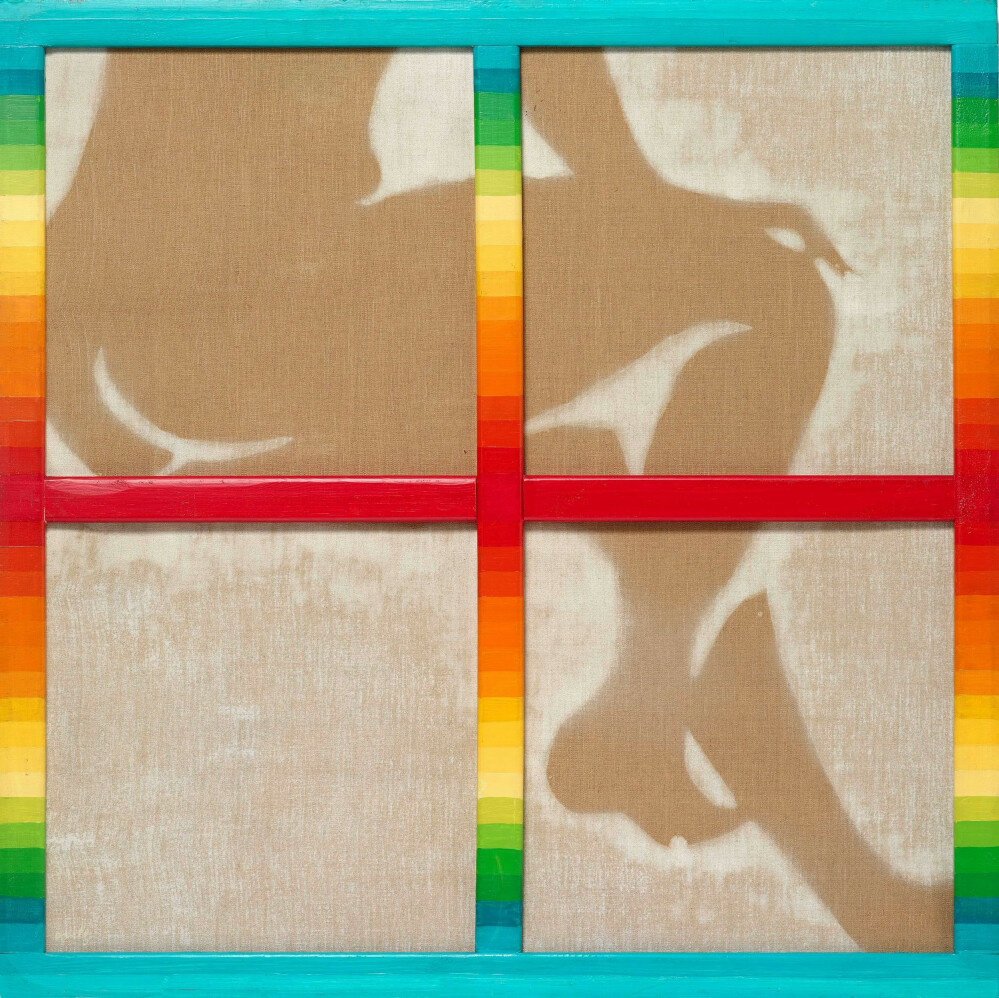Details
Oil on wooden frame and spray on canvas
Sig. on the reverse 1967 with title - Exhibition label on the reverse PMMK, Ostend
Unframed
100 x 100 x 2 cm
With documentation
Exhibition
- "Evelyne Axell" Museum van Elsene 1997 and PMMK, Ostend 1999, cat. p. 42 ill. "Axell. Le Pop Art jusqu'au Paradis" Maison de la Culture de la Province de Namur, Namur 2004, cat. no. 53 ill. "Axell Eration" Museum Abteiberg, Mönchengladbach 2011, cat. no. 21 ill. "Evelyne Axell: Body Double" Museum Susch (Ch) 2020
Literature
- "Une Frisson de la vie" 1977, p. 32 "L'amazone du Pop Art" Doornik 2000, p. 30 and 55 "Power Up - Female Pop Art" 2010, p. 38 ill.
Lot essay
The thrill of life
The 1960s were one of the most innovative periods of the 20th century. The exchange of ideas on liberalism, pop culture, femininity and self-consciousness created an extraordinary dynamic in which Evelyne Axell's creativity could flourish. The mythical artist does not just stand for her art, she stands for a way of being. Or what Pierre Restany calls "the thrill of life".Axell was one of the few female pop artists in Europe. Despite her far too short career, she managed to distinguish herself with an extremely personal and original iconography. She initially started out as a theatre and film actress in the Nouvelle Vague scene. It quickly became clear to her that, as a female performing artist, she was subject to the male gaze, which would obstruct her creativity too much. She then devoted herself to painting, under the wing of René Magritte.
Above all, my world is an unconditional joie de vivre, in spite of its aggressive aspect. My motive is clear: nudity and femininity reflect a vision of the world in favor of a bio-botanical freedom, that is a freedom that resists both frustration and gradual binding, and one that is willing to accept only the restrictions it imposes upon itself.
“Le beau châssis” (“The beautiful framework”) is an unprecedented audacious work of art. It is not a painting in the classical sense. The painting appears to be on the back. What we see is only a shadow of the depicted. Sensual contours suggest an anonymous woman, normally subject to the viewer’s gaze, but this time she turns her back on us. Unlike the naked canvas, the framework is vividly covered in bright colors. The ambiguous title not only refers to the chassis, but is used in the French language as an objectifying reference to feminine beauty.
Axell creates a dreamy image with a touch of eroticism in which she incorporates surrealism and humor. Pin-ups and seductresses are objectified by her fellow male pop artists into excesses of the consumer society, a product of the masses. Axell manages to reclaim this image of the woman, a woman who is free and unbound.

